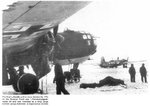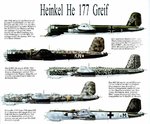Hi guys, im wondering if any of you out there know what the accurate specifications for a He 177 would be?
I have been doing some surfing on the net and looking though some books and have found some big discrepancies?
Its max bomb load seems to vary between 1000kg to 6000kg?
While it's top speed seems to vary from 295mph to 350mph?
If anybody could help me out that would be great!!
I have been doing some surfing on the net and looking though some books and have found some big discrepancies?
Its max bomb load seems to vary between 1000kg to 6000kg?
While it's top speed seems to vary from 295mph to 350mph?
If anybody could help me out that would be great!!


